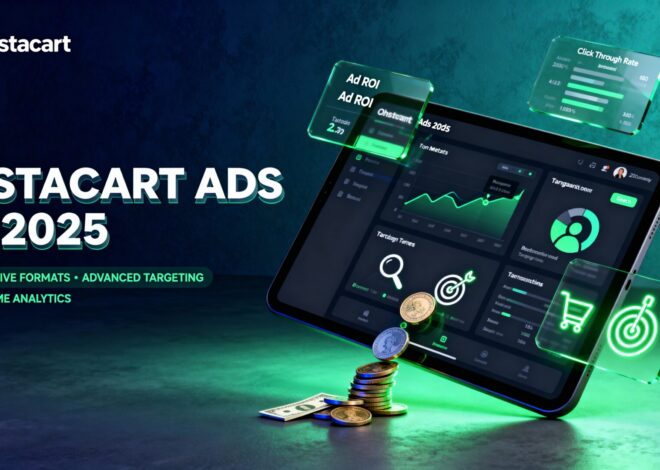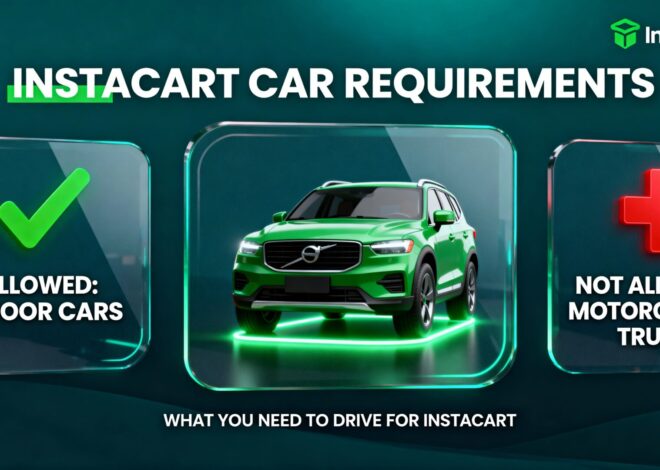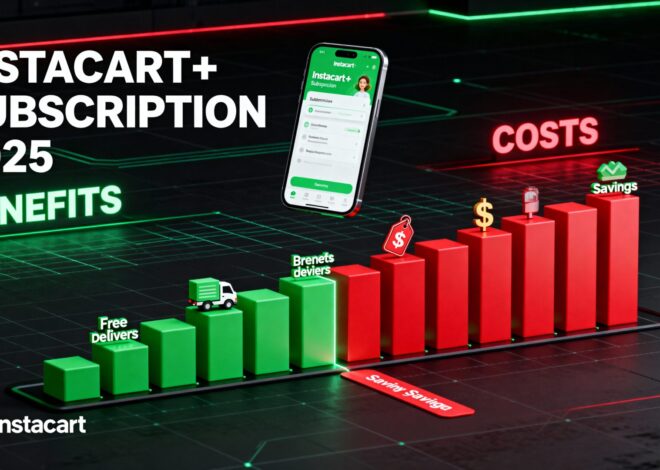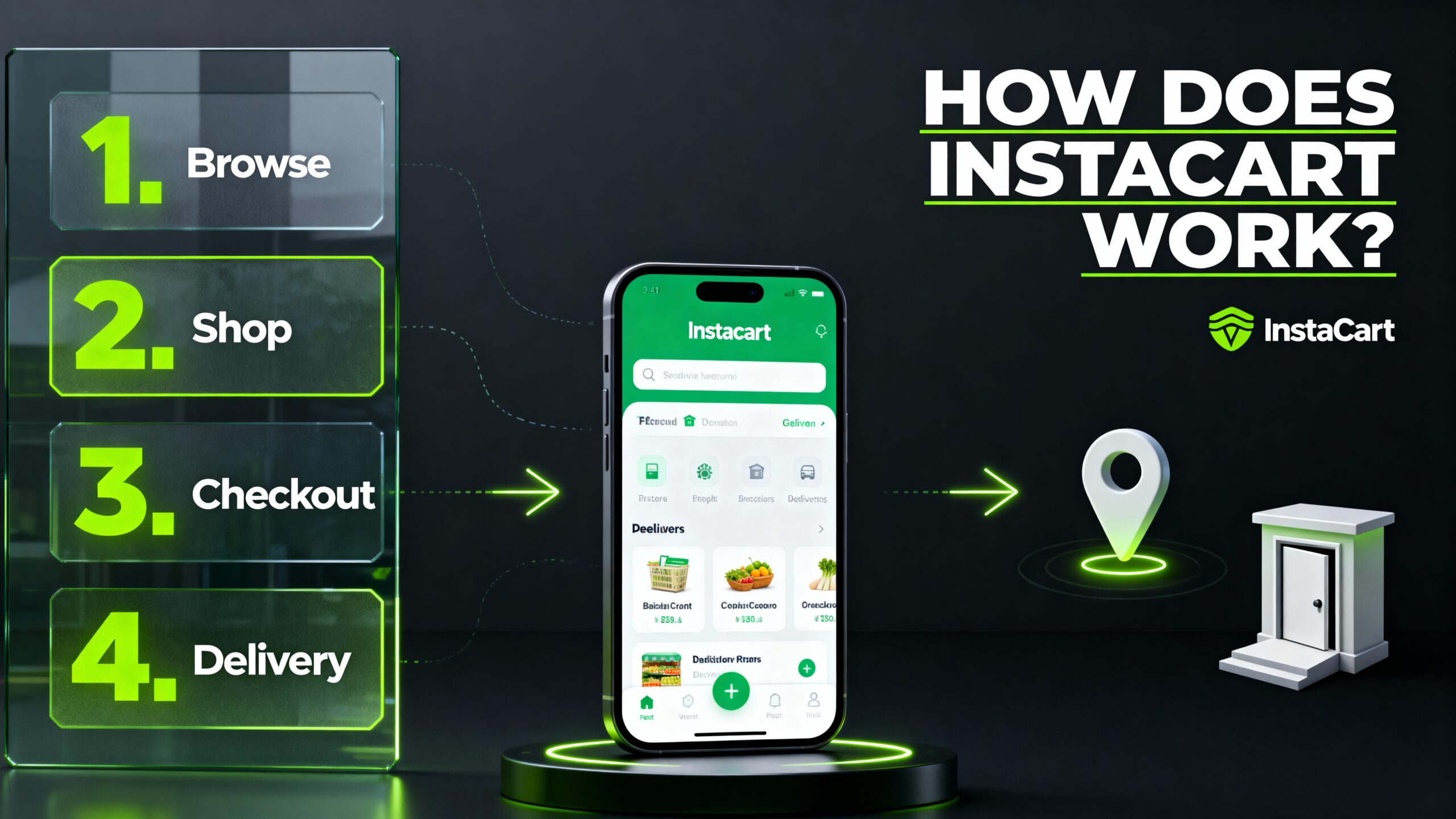
How Does Instacart Work in 2025? A Step-by-Step Guide for Customers & Shoppers
In the fast-evolving world of on-demand services, Instacart remains a powerhouse for grocery delivery and pickup, connecting millions of users with over 1,500 retailers across North America. As of September 2025, Instacart processes billions in transactions quarterly, leveraging AI for personalization and seamless integrations like family accounts and in-store purchase history. But how does it actually work? This in-depth guide breaks it down step by step—for customers placing orders and shoppers fulfilling them—drawing from official sources, recent updates, and real-user insights from X. Whether you’re a busy parent scheduling weekly hauls or a gig worker eyeing flexible income, you’ll get the full picture, including fees, processes, and 2025 enhancements.
Founded in 2012, Instacart’s model crowdsources independent shoppers to handle orders from local stores like Costco, Aldi, and Kroger. In 2025, features like contactless delivery, SNAP/EBT support, and AI-driven substitutions make it more accessible than ever. Let’s dive into the mechanics.
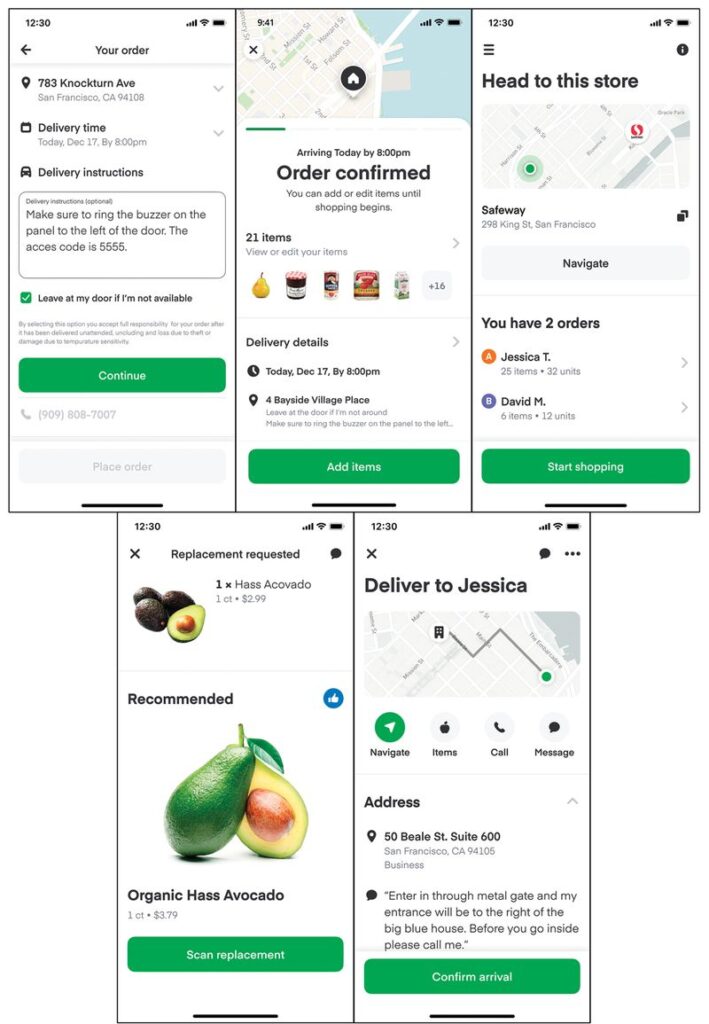
How Instacart Works for Customers: Ordering Groceries Made Easy
Instacart simplifies grocery shopping by letting you browse, order, and receive items without leaving home. The process is app-centric (available on iOS/Android) or via the website, with delivery or pickup options. Here’s the step-by-step breakdown, based on official guides.
Step-by-Step Ordering Process
- Sign Up and Set Location: Download the Instacart app or visit instacart.com. Create an account with your email, name, and password. Enter your zip code or address to view nearby stores—Instacart covers 99% of U.S. households and select Canadian areas. For 2025, enhanced location tech ensures accurate store availability.
- Browse and Build Your Cart: Search for products, compare prices, and check sales across multiple stores. Use categories, filters (e.g., organic, gluten-free), or AI features like “Smart Shop” for personalized recommendations based on past orders or dietary prefs. Add items by tapping “Add to Cart.” In 2025, integrations with recipes (e.g., New York Times Cooking) allow shoppable lists—tap a recipe, and ingredients auto-populate.
- Customize Preferences: For each item, set substitution options: “Find best match,” “Specific replacement,” or “Don’t replace.” Add notes like “Ripe bananas only.” This minimizes issues, as shoppers communicate via in-app chat for out-of-stocks (affecting 25-35% of orders). New 2025 features include nutritional summaries and “Care Carts” for health-focused plans.
- Checkout and Payment: Review your cart (item total, minimums for free delivery). Select delivery or pickup. Payment options: Credit/debit, gift cards, Klarna (Buy Now Pay Later), or SNAP/EBT at participating stores (covering 98% of eligible users). Family accounts (enhanced in Q1 2025) let multiple users add to a shared cart.
- Schedule Delivery or Pickup: Choose a 1-2 hour window same-day or up to 5 days ahead (9 a.m.-midnight). Express for under 2 hours adds fees. Pickup? Select a store and time—drive up, and it’s ready. Contactless “Leave at Door” is standard.
- Track and Receive: Get notifications when a shopper starts. Chat in real-time for updates. After delivery, rate the experience—refunds for issues (e.g., damaged items) are handled via app, with 80% resolved quickly. In 2025, post-delivery reporting is streamlined: Select items, specify problems (missing, wrong), and get instant refund calculations.
X users like @David_Gutierr90 highlight frustrations: “why do yall make it so hard to fix an issue? I received an incorrect order…” But positives abound, like @zek: “order your groceries. saves an extra 1-2 hours a week.”
Fees and Costs in 2025
Fees vary by order size, speed, and membership. Markups (15-50% over in-store) are common.
| Fee Type | Non-Member | Instacart+ Member | Notes |
|---|---|---|---|
| Delivery Fee | $3.99-$7.99 (over/under $35) | Free (over $10, lowered in 2025) | Express adds $4-7; first order free |
| Service Fee | 5-10% | Full rate (no reductions post-2024) | Operational costs |
| Priority/Small Order | $2-4 (<$10) | Waived for $10+ | New low-minimum perk |
| Pickup Fee | Varies by store | Often free | Self-pickup option |
| Tips | 10-20% recommended | Same | Impacts shopper priority; adjustable post-delivery |
| Taxes/Regulatory | 1-3% | Same | State-dependent, e.g., CA surcharges |
Instacart+ ($99/year or $9.99/month) unlocks perks like 5% credit on pickups and shared family carts. Pro tip: Toggle “in-store prices” to spot deals and avoid markups.
Delivery Options and Enhancements
- Standard Delivery: 1-2 hours same-day.
- Pickup: Curbside at store, ideal for bulk.
- 2025 Perks: Unified history (online + in-store purchases), AI substitutions, and offers like “Buy X, Get Y% Off” on weighted items (e.g., $4/lb beef for 2lbs+). Eco options: Reusable bags in select markets.
For accessibility, SNAP integration splits carts for eligible items.
How Instacart Works for Shoppers: The Gig Behind the Delivery

Shoppers are independent contractors who shop and/or deliver. It’s flexible—no fixed hours—but competitive. In 2025, with the May contract update, pay is batch-based, emphasizing time, distance, and items.
Signing Up and Getting Started
- Apply Online: Visit shoppers.instacart.com or the Shopper app. Must be 18+, have a valid driver’s license (for delivery), reliable vehicle/bike (in cities), and pass a background check. No experience needed—start in days.
- Onboarding: Download the Shopper app, complete training modules on app use, substitutions, and customer service. Get an Instacart debit card for purchases.
- Roles: Full-service (shop + deliver) or in-store (prep only, hourly ~$15-17). Over 600,000 shoppers in 2025.
X’s @IndyCarChick notes economic reliance: “it’s highly possible she works 40 hrs full time and still has to Instacart groceries to afford life.”
The Batch Process: From Acceptance to Delivery
- View and Accept Batches: Log in anytime. App shows available batches with upfront pay ($4-10 base), item count, store, distance, and tip estimate. Accept or decline—algorithm prioritizes high-rated shoppers (4.8+ stars).
- Shop the Order: Navigate to store via app map. Scan items by department/aisle; chat customers for subs (e.g., “Organic avocado OK?”). Handle multiples if batched (2-3 orders). 2025 app updates: Shopping filters, item summaries, reimbursements for returns.
- Checkout and Deliver: Pay with Instacart card. Bag items, confirm arrival at address, and deliver (contactless default). Photo proof for some.
- Rate and Earn: Customers rate you; maintain high scores for better batches. Pay weekly via deposit.
Challenges: X’s @DrBenjaminJohnson questions low-pay batches: “15 miles for $18?” But tips help—average $6-10/order.
Earnings Structure in 2025
Base: $4-10/batch (time, distance, weight). Tips: 60-70% of take-home. Bonuses: Peak ($2-20), Diamond perks (priority, free + membership). Average hourly: $15-26 gross, net $12-20 after expenses (gas, no reimbursements).
| Earnings Factor | Low | Average | High | Notes |
|---|---|---|---|---|
| Base/Batch | $4-6 | $7-8 | $9-10 | Multi-store +$2-5 |
| Tips/Order | $2-5 | $6-10 | $12+ | Adjustable post-delivery |
| Bonuses | $0-5 | $5-10 | $15+ | Peaks, ratings-based |
| Hourly Gross | $10-14 | $16-22 | $25+ | Urban peaks higher |
| Net (20-30% Deduct) | $8-11 | $13-18 | $20+ | Track mileage ($0.67/mile) |
From May 2025 contract: Estimated pay upfront, no hourly minimum. Tips: Use Rewards Card for gas cashback.
Key 2025 Updates and Innovations
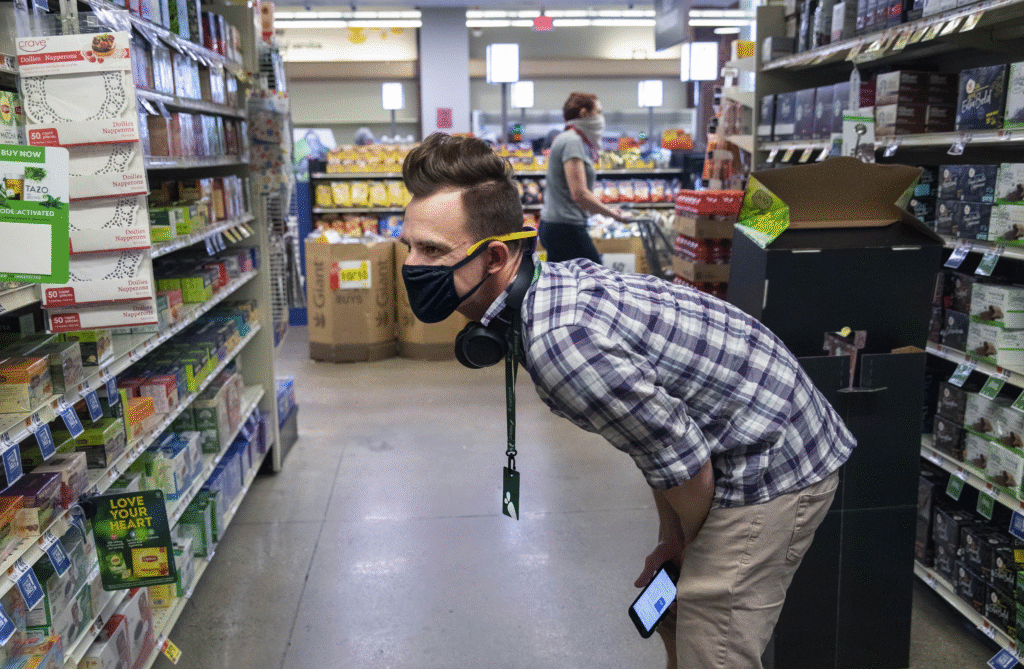
Instacart’s Q1-Q3 releases focus on usability:
- Family Accounts: Invite/manage from cart; shared shopping.
- Unified History: View in-store + online purchases together.
- Offers Enhancements: Weighted items (e.g., produce by lb), alcohol in minimums.
- Issue Reporting: Real-time refunds for post-delivery problems.
- Shopper App: Reimbursements, move items, filters for efficiency.
- AI & Health: Nutritional info, “flavor genome” for recs (e.g., chips suggest salsa).
Financials: Q1 2025 showed 17% order growth, with AI driving personalization.
Potential Drawbacks and Tips
- For Customers: Substitutions, markups, delays in low-demand areas. Tip: Schedule ahead, communicate prefs.
- For Shoppers: Volatility, physical toll, deactivations for low ratings. Tip: Aim for Diamond status, multi-app.
Final Thoughts: Convenience with a Human Touch
Instacart in 2025 streamlines groceries via app magic and shopper hustle, saving hours while offering gig flexibility. For customers, it’s effortless ordering; for shoppers, rewarding but demanding work. As @max_levko notes on product recs: “Instacart solved the ‘cold start’ problem by mapping the ‘flavor genome’ of its PRODUCTS.” Ready to try? Sign up and order—your first delivery’s free.
What’s your Instacart experience? Comment below!

